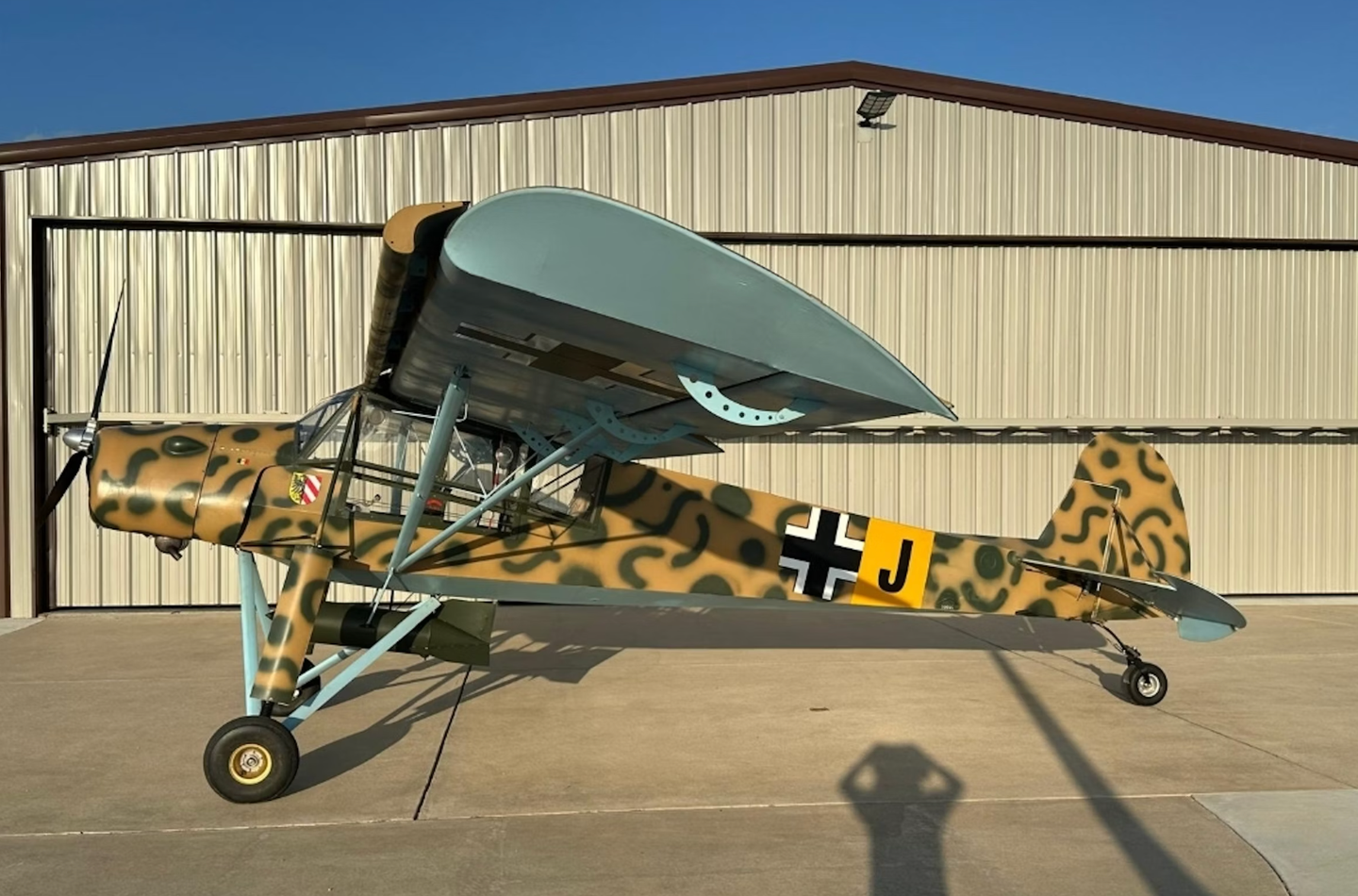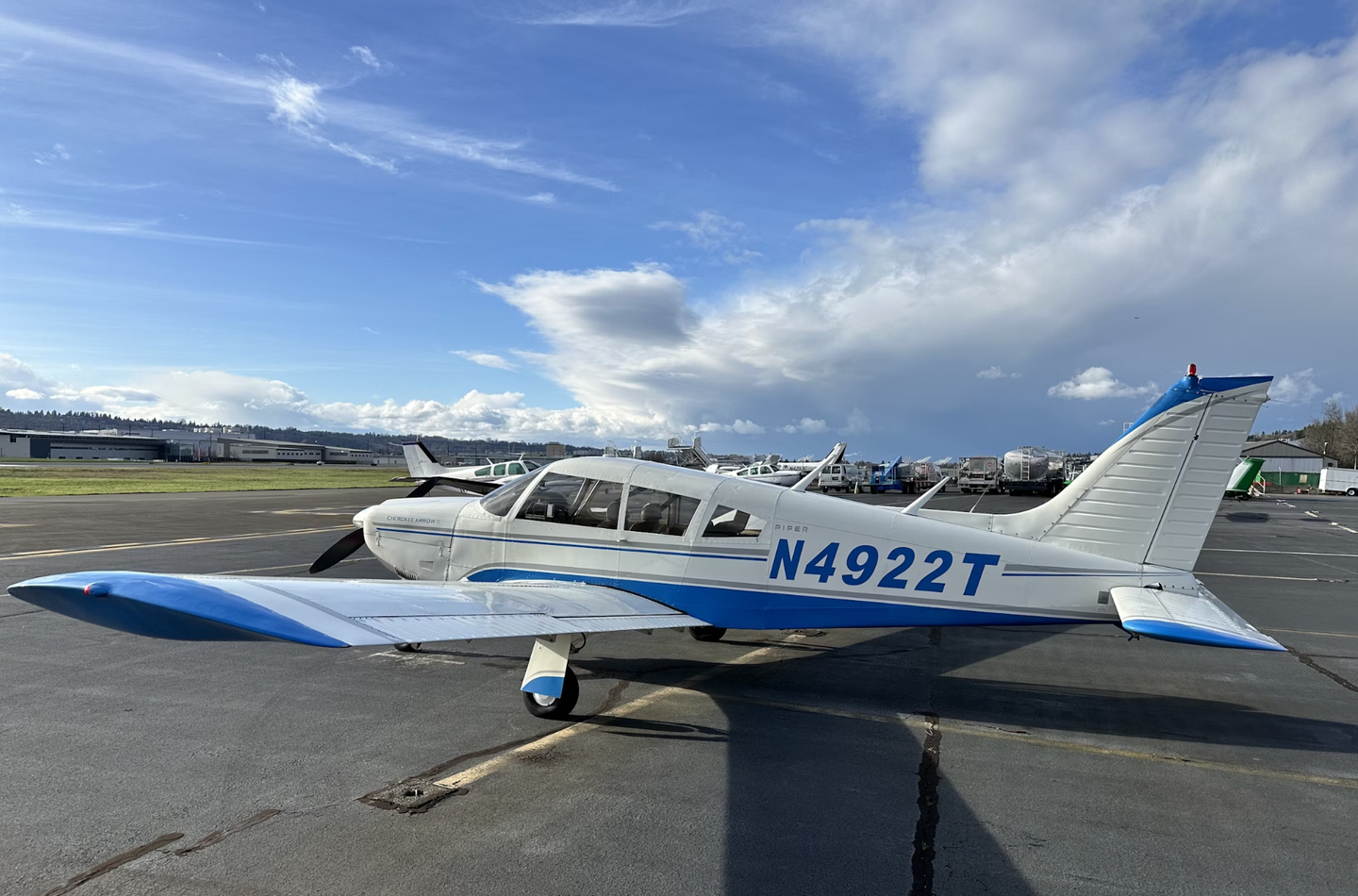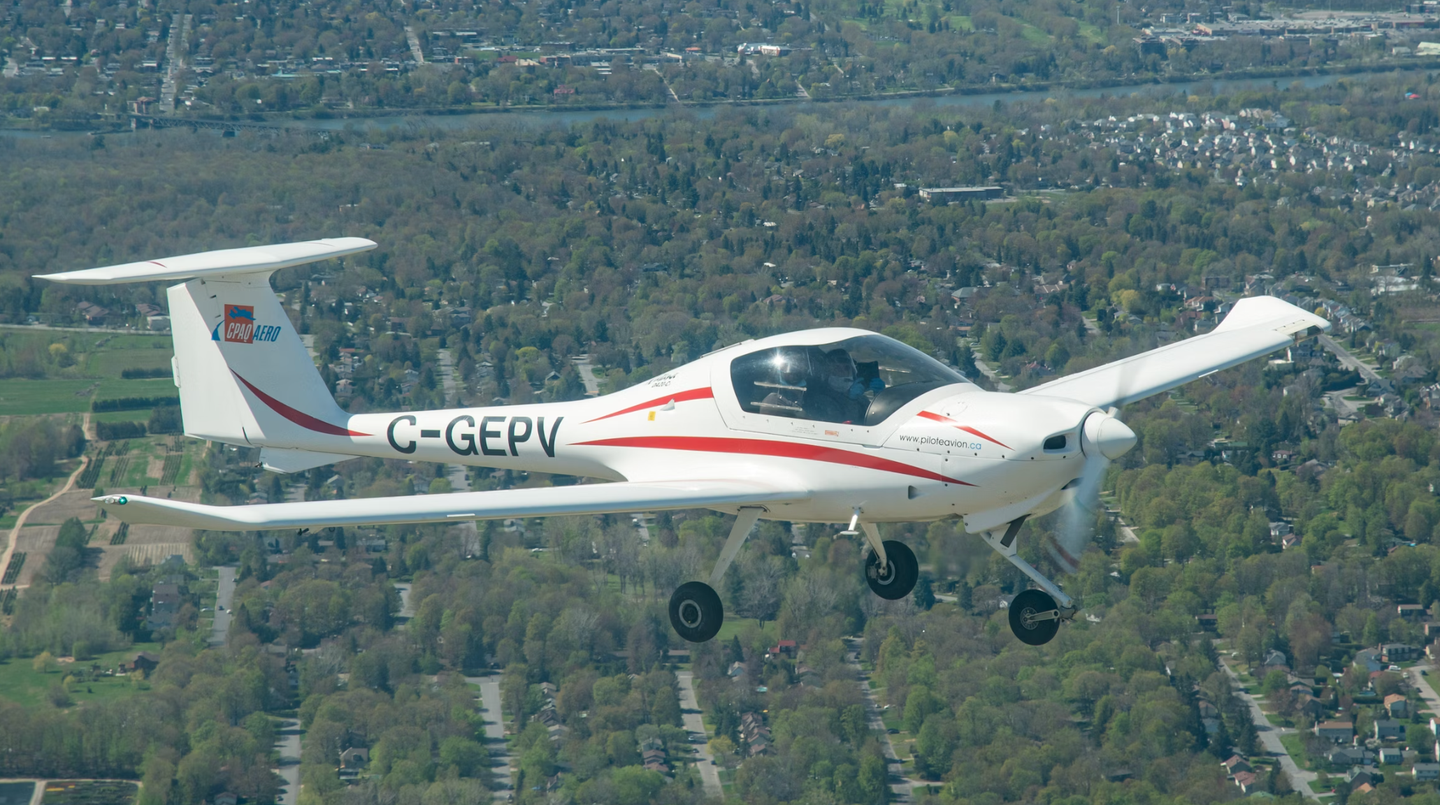Pipistrel Velis Electro: The World’s First Certified Electric Plane
Here’s where the future begins, how it will work and why you should care.
an hour and head
back to base. Photo courtesy of Pipistrel
Here's the part where I describe the way the future will look. How the Pipistrel Velis Electro, the world's first certified electric aircraft, will change everything. But there's no way for me to do that.
The story is this: Pipistrel, a small company in Slovenia that, despite its lack of a downtown Wichita address and even much name recognition, has managed to make itself into arguably the most innovative small-airplane company in the world, one that's the opposite of the big-VC-bucks Silicon Valley start-up urban aerial vehicular fantasies that have tens or hundreds of millions in capital and no really good ideas to spend it on. Pipistrel is in the actual airplane business, the real airplane business, building and selling actual airplanes to be flown by actual pilots!today! Not that there's anything wrong with well-financed visionary companies!well, on second thought, there's a lot wrong with them, chiefly that the thing they're selling is a vision of the future that they need to hawk slavishly in order to keep investment capital flowing in the right direction.
Pipistrel, on the other hand, once again, designs, builds, certifies and then sells airplanes. There's something brilliantly honest about that, about this very business, and the planes the company makes are a reflection of that. Those planes are, and you'd be forgiven if you weren't aware, quiet, efficient and fun to fly.
The Velis Electro, the company explains, is part of a system of development that has played out over many years, starting with the Alpha Electro, which first flew six years ago. It was during that protracted process that Pipistrel was able to work out a lot of the design elements that would go into the Velis Electro, which is, of course, the subject of this story.
I was tempted to think that the switch to electric propulsion was like slapping on a different engine, admittedly not a simple thing at all, especially when there's a new fuel source. But going electric means changing everything about the way power is produced.
The payoff, however, is huge. Electric propulsion, battery-powered thrust, is flip-of-a-switch, silent running and cheap, cheap, cheap, cheap, cheap. But it takes some doing to get there.
The certification process, for one thing, was a protracted, complicated process despite Pipistrel's real-world experience with previous electric propulsion systems. Earning that certification---the plane is certified in Europe through EASA---took three years and required Pipistrel to do a lot of the work, not only to show that the Velis Electro was airworthy and safe, but along the way, it also had to assist EASA in figuring out how to determine those things. It's not unprecedented here in the States. Early makers of IFR-approved GPS receivers and flat-panel avionics had to help the FAA suss out out the very pathways toward certification, and such will doubtless be the case for any company looking to certificate an electric-propulsion aircraft in the United States.
RIP Combustion Engines?
Are we witnessing the death of internal combustion, fossil fuel engines? Hardly. We have a long way to go before electrics comprise even a small fraction of the fleet, and some of that growth will depend on hoped-for improvements in battery storage capacity that have yet to happen.
And the fact is, for most of us pilots who continue to drone along under fossil fuel power, the sound of electric flight remains a mystery. For me, and for you as well, flight is inextricably connected to the roar of power production, so much so that we pilots prize and hold dear to us those small technological marvels that are electronic noise-canceling headsets. The thought of flying a Cirrus or Piper or, really, just about anything, without a good-quality headset is a non-starter.
That's not really for all of us. Those of us who have gliders and the like, and I have just a handful of hours in a smattering of different kinds of wind-powered conveyances, well, we have a sense of flying that separates itself from the engine of power, though we do so with the knowledge that we operate at the pleasure of nature, with nothing to firewall when things get tight. There's no fire to wall.
As such, electric flight is a revelation. It is powered flight without power's angry twin, noise, as if the clatter and din were one of the four forces of flight instead of just an unfortunate by-product of it.
The other part of power production is money, for every hour's fuel cost is great, so great, in fact, that fuel costs are the single biggest factor keeping people away from flying on a regular basis. I drive for a couple of weeks around town in my big, inefficient, ecologically indefensible sport ute and put 40 or 50 bucks worth of gas into it when the gauge starts creeping towards "E." In a small plane, that same amount of fuel gets depleted every hour! A fill-up after a half-day of flying will cost me half a thousand dollars.
And that's not all. There's the heat---combustion engines run white-hot, and much of what we do in the air is designed to keep our powerplants happy, and they are always a broken this or clogged that away from no longer producing noise or heat or thrust at all. And the costs not just of feeding these beasts, but also of keeping them alive are great. Small airplane owners without giant caches of green in their bank accounts live in fear of that day when the word "overhaul" can no longer be shushed.
Electric propulsion eliminates or greatly mitigates every one of those unfortunate hangers-on of what we think of as flight. Electric propulsion is not just revolutionary. It's revolutionary in about five powerful, distinct ways, ways that will one day transform light airplanes into machines that make flying so cheap and clean and quiet and easy that there will be few reasons for not flying, and today there are nothing but good reasons not to fly. We fly in spite of the great demands that powerplants relentlessly put upon us.
The Pipistrel Velis Electro
There's nothing particularly revolutionary about the Velis in terms of its design---well, at least not any more revolutionary than any of Pipistrel's other designs. It's profoundly similar to several other models in basic configuration: It's a two-place, side-by-side, high-wing, tricycle gear, carbon-fiber, control sticks and all-glass airplane with a long wing that looks as though it would be right at home on a sailplane because it would.
And it's important to understand that you can't really think of the Velis Electro as an airplane but as a trainer, and even more to the point, as part of a trainer aircraft system because its batteries and charging stations are integral parts of this airplane, or any other electric plane making any sense in the real world. One could argue, of course, that the same is true for gas piston airplanes, which dominate our segment of aviation, and it's undeniably true. The production, transportation and delivery of fuel are necessary to what we do, again, hang glider pilots excepted, but fossil fuel delivery is just so broadly integrated into the infrastructure of light GA that we literally don't have to think about it. So, yeah, electrics are nothing different from that, except they're essentially nowhere to be found yet.
So what about the motor? The one really big thing about it is the part that makes the most noise, which is hardly any noise at all. Pipistrel doesn't specify the motor by manufacturer because, unlike gas piston engines from the likes of Rotax or Lycoming or Continental, the motor in the Velis Electro had to be certificated by the airframer, so it's a Pipistrel TC E-811 motor.
That powerplant outputs the equivalent of only 77 hp, but the wing design is super efficient---sailplanes have motors even less powerful, you know---and the powertrain is optimized, with a composite fixed-pitch prop and liquid cooling.
Electrics are new to most of us still, but, yes, electric propulsion systems do get hot. The Velis Electro addresses this with a liquid cooling system composed of two electrically driven coolant pumps and a radiator, but in this case, what the system is designed to cool is not the motor but the batteries.
There are two battery banks, one in the nose and the other behind the seats, that are connected in parallel, each one of them putting out half the power. If one were to go kaput, it gets automatically disconnected from the system, and the remaining battery is what's left of the fuel. Only, unlike with gas piston engines, that fuel is also the power, so you get half of both range and endurance and output. Pipistrel says it's still enough to climb and limp home again, though bear in mind you'll be flying behind a whopping 35 horses, so don't expect rocket ship-level performance.
The design of the electric charging system, Pipistrel told me in an email, is a compromise "between charging time, ambient temperature, robustness and battery system lifetime," so while it could have made charging faster, doing that comes at a cost, several costs, in fact.
"A normal charging cycle," the company explained, that is, "from 35% to 95% SOC (state-of-charge) takes up to one hour and 20 minutes. A full charge from empty to 100%, depending on ambient temperatures and age of battery, takes up to two hours."
In normal usage, Pipistrel explained, a training flight will last an hour, and the plane will return to base, where it will be plugged in for about 60 to 90 minutes, at which point it will be ready to launch with "full tanks."
And it hopes that those times decrease, though it's not blind optimism. The truth is that this stuff is new to everyone, so the company expects that "operational experience and technical improvements" will give it the kind of insights and tools to "activate charging logic profiles for shorter charging times." Shorter charging times equal more plane usage equals more flying time equals more profit for flight schools. So, in normal operation, you head out, go fly for an hour and come home with 30 minutes' reserve. It's how most training works, anyway.
Schools will be outfitted with charging stations, and it's clear that the idea is to operate fleets of planes so that while one is charging, another one that's now fully charged can be hopped into and flown away.
But not all training. For longer flights, schools will have to use planes with more endurance and range, that is, conventionally powered planes. Is that a bad thing? Well, yes and no. On the one hand, the student will have to learn how to fly a whole new type of machine, and on the other hand, the student will get to learn how to fly a whole new type of machine. And flying electrics will be so easy, there should still be plenty of gray matter left for all the new learning to latch on.
User experience is everything in most walks of life, but in aviation, we expect pilots to accept a pretty crummy one, with hard-to-start engines, high levels of noise, and complex power systems that require high levels of knowledge to understand, let alone troubleshoot literally on the fly. The Velis Electro addresses all of those issues.
Power management is simple, in the sense that the system manages it all for the pilot, with the displays there for the pilot to monitor the health and status of the system. The pilot doesn't need to manage the power carefully. They get to just fly. And doing that, the company says, you get an hour of flying time. We assume that could be stretched out and that at lower weights, such as when flying solo, you'll get more time.
Speaking of weight, the payload on the plane is 378 pounds, which you can tack on to the plane's full-fuel or empty weight, which are identical because electrons are so light.
The cost of the Velis Electro is just under $200,000 based on a July 2020 rate of exchange, which is a deal. But remember that the aircraft is part of a system, so the costs are more complicated on the front side.
On the backside, the benefits are huge, and they mostly come via the drastic cutting of fuel costs and the expected long life of the motor.
Pipistrel has already delivered a number of Velis Electros, including the first few aircraft to Swiss flight training operator AlpinAirPlanes GmbH, which will soon have 12 planes spread around 10 locations in Switzerland. The company, which has experience operating the Pipistrel Alpha Electro, is "bullish" on electrics. And to cut fuel prices even more drastically, it will install solar generators at each of its locations, to feed the charging on the aircraft, making them into solar-powered planes.
In Europe, one of the big selling points of electrics is their environmental friendliness, which isn't as established a societal value here in the States. But if we're honest with ourselves, the future prosperity of GA in the United States will depend on our planes getting quieter and cleaner, and when it comes to those two things, electric planes like the Pipistrel Velis Electro represent not only the future but also the necessary evolution of flying. How long that evolution will take is anybody's guess, but we know one thing: That timeline just got a little shorter.

Subscribe to Our Newsletter
Get the latest Plane & Pilot Magazine stories delivered directly to your inbox






